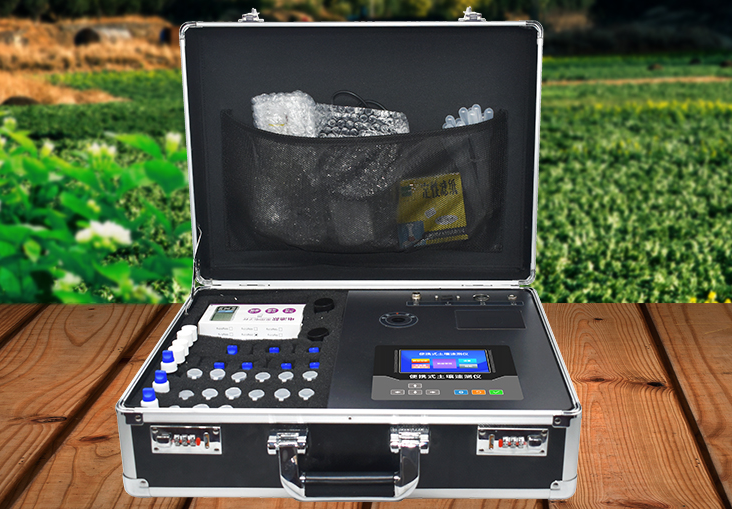Agriculture is a vital industry that provides food for the world’s population. However, traditional farming practices are often inefficient, leading to excessive use of resources and environmental degradation. Precision farming is an innovative approach that leverages technology to optimize crop growth and minimize waste. Soil sensors, in particular, have emerged as powerful tools for precision farming. In this article, we explore how soil sensor technology can improve crop growth and increase agricultural productivity.

The Importance of Precision Farming:
Precision farming aims to optimize crop growth by providing real-time data on soil conditions and plant health. By collecting data at the field level, farmers can tailor their management practices to specific needs, resulting in increased yields and reduced input costs. Precision farming also reduces environmental impact by minimizing the use of water, pesticides, and fertilizers, while maximizing resource utilization. With a growing global population and increasing pressure on natural resources, precision farming is essential for sustainable agriculture.
Soil Sensors: Types and Functionality:
Soil sensors are devices that measure various parameters related to soil health. Some common types include moisture sensors, temperature sensors, nutrient sensors, and pH sensors. Each sensor performs a specific function, providing farmers with critical information on soil conditions.
Moisture Sensors:
Measure soil moisture levels, helping farmers determine when and how much to irrigate. This information prevents over or under-watering, conserves water resources, and prevents waterlogging or drought stress.
Temperature Sensors:
Monitor soil temperature, which affects seed germination, nutrient availability, and microbial activity. By tracking soil temperature, farmers can optimize planting schedules and adjust management practices accordingly.
Nutrient Sensors: Measure the concentration of essential nutrients in the soil, such as nitrogen, phosphorus, and potassium. This data helps farmers make informed decisions about fertilizer application, minimizing waste and environmental impact.
pH Sensors:
Determine the soil’s acidity or alkalinity level, which affects nutrient availability and microbial activity. Monitoring soil pH allows farmers to adjust soil amendments and optimize conditions for specific crops.
- Advantages of Soil Sensor Technology: Soil sensor technology provides several advantages for precision farming:
Improved Resource Management: Soil sensors enable precise management of water and nutrients, reducing waste and environmental degradation. By monitoring soil conditions, farmers can apply fertilizers and pesticides only where they are needed, optimizing resource utilization while minimizing waste.
Real-Time Monitoring:
Soil sensors provide real-time data, allowing farmers to make immediate adjustments to their management practices. This rapid response minimizes the risk of crop failure, reduces input costs, and improves overall farm efficiency.
Increased Crop Yields:
By tailoring management practices to specific soil conditions, farmers can achieve higher crop yields. Soil sensors enable farmers to identify areas with varying needs, allowing them to apply targeted treatments that promote optimal plant growth.
Sustainability:
Precision farming with soil sensors promotes sustainable agriculture by reducing waste and minimizing environmental impact. By monitoring soil health, farmers can minimize the use of pesticides and fertilizers, reducing pollution and preserving natural resources.
- Challenges and Future Developments: While soil sensor technology offers immense potential, there are still challenges to overcome:
Cost: Soil sensors can be expensive, limiting their adoption by small-scale farmers. However, as technology advances and economies of scale come into play, the cost of soil sensors is gradually decreasing, making them more accessible to a wider range of farmers.
Calibration and Maintenance: Soil sensors require regular calibration and maintenance to ensure accurate readings. Proper training and guidelines must be provided to ensure farmers can effectively use and maintain these sensors.
Data Interpretation: Collecting vast amounts of data from soil sensors can be overwhelming. It is essential to develop user-friendly software and tools for data interpretation, allowing farmers to make actionable decisions based on sensor readings.

In the future, advancements in soil sensor technology are expected to address these challenges. Improved sensor accuracy, increased affordability, and enhanced data analytics will further unlock the potential of soil sensors in precision farming.
Conclusion: Precision farming with soil sensor technology is a game-changer in modern agriculture. Soil sensors enable farmers to optimize crop growth, reduce waste, and minimize environmental impact. By tailoring management practices to specific soil conditions, farmers can achieve higher yields, improve resource utilization, and promote sustainable agriculture. As technology advances and costs decrease, soil sensors will become increasingly accessible to farmers worldwide, contributing to the resilience and longevity of our agricultural systems. Precision farming with soil sensor technology represents a paradigm shift in how we grow crops, paving the way for a more efficient, productive, and sustainable agriculture industry.
